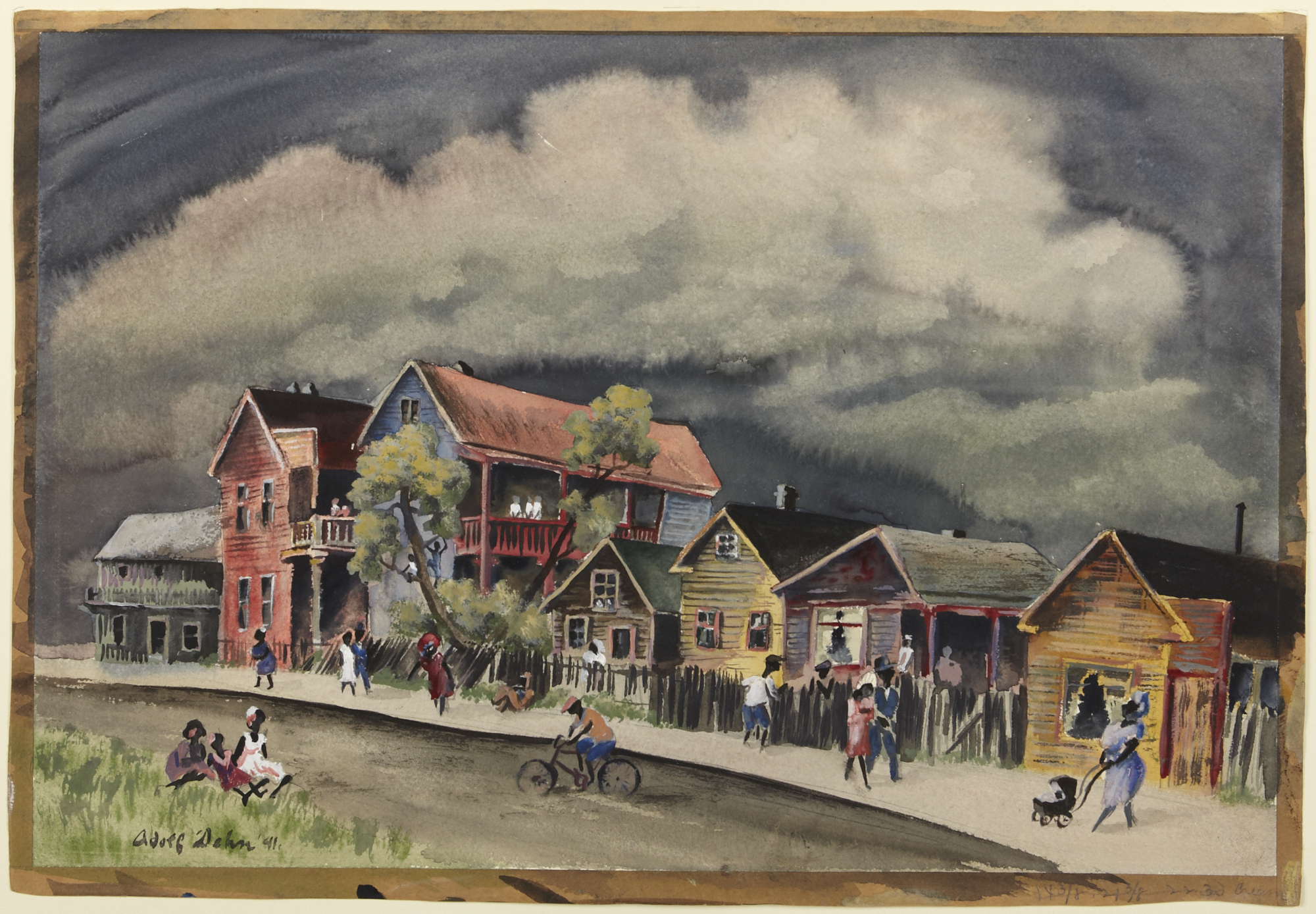Adolf Dehn
Dehn's satirical prints of European and New York scenes were the product of an unconventional Minnesota upbringing and an iconoclastic eye. The son of a feminist, socialist mother and an atheist, anarchist father, he was not destined for a quiet life. He studied at the Minneapolis Art Institute and the Art Students League in New York, after which he was imprisoned as a conscientious objector during World War I. On his release Dehn took odd jobs and made his way to Europe, where his work as a magazine illustrator supported him and his Russian immigrant wife in their travels. While in Europe Dehn was a critical observer of the social scene, especially in Vienna and Berlin, and a light-hearted painter of park scenes and landscapes. In 1930, after his return from Europe, his work, on both European and New York subjects, was shown at the Weyhe Gallery in New York City. The critical response was good, but sales were only moderate. In the mid-1930s, Dehn began to paint watercolor landscapes, which proved immensely popular. As a result, new commercial opportunities opened, including travels through the United States, Mexico, and Venezuela. His fame led to offers to teach and then to work for the Navy during World War II. Throughout the forties, fifties, and sixties, Dehn and his wife traveled around the world, doing commercial work and lithography. His work became less satirical and more fanciful, and he experimented with new graphic techniques. He died of a heart attack in 1968 while planning new trips, beginning a book, and organizing a retrospective.
William H. Truettner and Roger B. Stein, editors, with contributions by Dona Brown, Thomas Andrew Denenberg, Judith K. Maxwell, Stephen Nissenbaum, Bruce Robertson, Roger B. Stein, and William H. Truettner Picturing Old New England: Image and Memory (Washington, D.C.; New Haven, Conn; and London: National Museum of American Art with Yale University Press, 1999)














